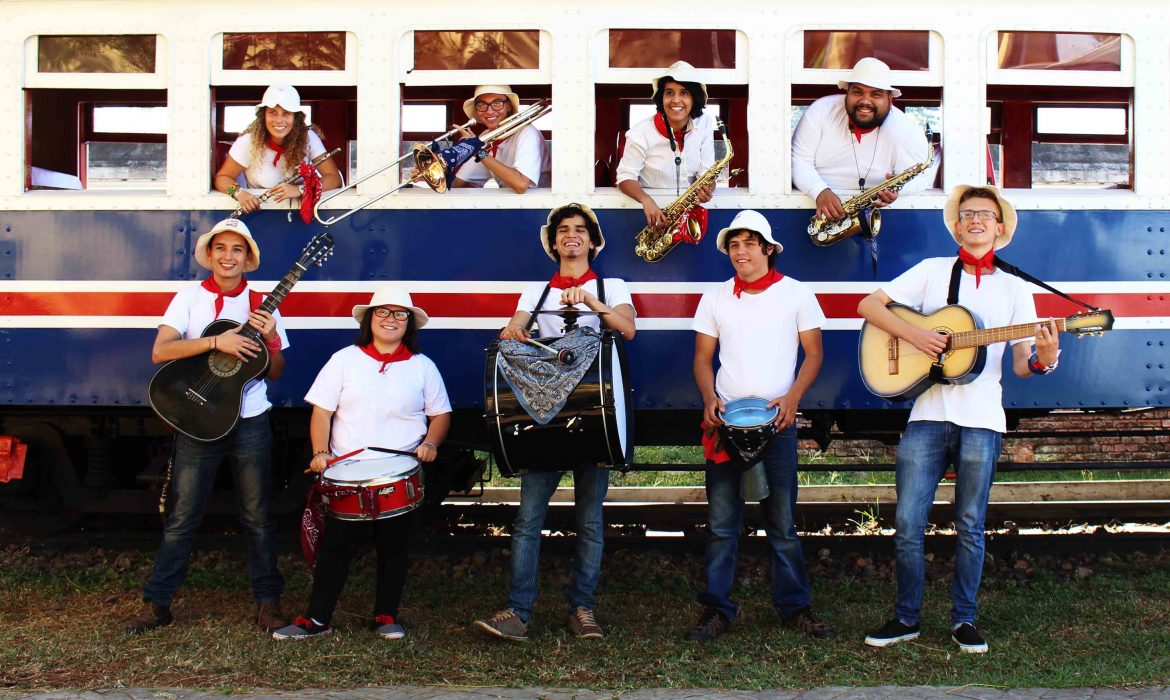The year 2022 has begun with a recognition for Costa Rican music, since the cimarrona, as a cultural manifestation of the Costa Rican people, has been declared Intangible Cultural Heritage of the country of Pura Vida, in a list where Calypso is already included.
The year 2022 has begun with a recognition for Costa Rican music, since the cimarrona, as a cultural manifestation of the Costa Rican people, has been declared Intangible Cultural Heritage of the country of La Pura Vida, in a list that already includes calypso. As part of Costa Rica’s cultural richness, the cimarrona has been one of the main accompaniments of masquerades, popular festivals or public or private events for more than a century. These are small groups of musicians, typical of the folklore of the cantons and towns of Costa Rica, which are characterized mainly by being made up of wind and percussion instruments.
The recognition, approved by government decree promoted by the Ministry of Culture and Youth of the country, stands out for the practice of cimarrona music in the communities of Santo Domingo and Barva, in Heredia; Palmares in Alajuela; Tres Ríos, Pacayas, San Isidro del Guarco and Juan Viñas, in Cartago; Liberia, Cañas and Nicoya, in Guanacaste; Esparza in Puntarenas; Aserrí, Ciudad Colón, Escazú and Santa Ana, in San José; among others.
The Ministry of Culture and Youth, through the Center for Research and Conservation of Cultural Heritage and the National Commission for Intangible Cultural Heritage (Conapaci), is the guardian of the UNESCO Convention for the Safeguarding of the Intangible Cultural Heritage. Among its functions are the attention of the institutional administrative procedure: declarations of cultural manifestations, which, along with their knowledge and wisdom, are part of the national intangible cultural heritage.The request for declaration was made to the National Commission for Intangible Cultural Heritage (CONAPACI) in November 2020, signed by the Municipality of Santo Domingo de Heredia and the Santo Domingo Cuna de la Cimarrona movement, represented by Juan José Carazo Bolaños, one of the promoters of the declaration. A bit of historyThere are many groups throughout the country that interpret the “Traditional Music of Cimarrona”, today declared intangible cultural heritage of the country.
The research that supports the declaration, which was contributed by musicians from Santo Domingo de Heredia, has provided a great deal of data that allows us to give the cimarrona the place of honor that is now recognized as a relevant part of the expression of Costa Rican identity.
The cimarronas emerged in the different towns of Costa Rica in the first decades of the 20th century. They are formed by wind instruments such as clarinet, saxophone, trumpet, bugle, trombone, baritone or euphonium, tuba; and percussion: redoblante, bass drum and cymbals.
The term “cimarrón” has two meanings: the first refers to the condition of the uncultivated and the second refers to the wild. In this way, the term is related to these musical groups because of their independent and empirical character.the music performed by the cimarronas comes from multiple sources. Initially, these groups played rhythms that are catalogued as part of traditional Costa Rican music, such as the son guanacasteco (parrandera or tambito), the contradanza, the waltz, the pasillo or the jota, all coming from different latitudes or influenced by other cultures.Currently, this type of musical group is not particularly linked to one or several of them.
On the contrary, its instrumental conformation is so versatile that it allows the inclusion and adaptation of works of diverse genres, rhythms and styles, combining in its interpretation diverse ethnic and cultural characteristics, traditional and contemporary rhythms, in communion with the features of each zone or region, a quality that exalts one of the greatest particularities of this cultural manifestation. “Through the definition of significant heritage manifestations, people remember and recognize their sense of belonging to a social group and, therefore, reinforce both their local and regional cultural identity,” adds Paola Salazar, anthropologist and head of the Intangible Cultural Heritage Unit of the Cultural Heritage Center.
As the decree states: “traditional Costa Rican cimarrona music is a living manifestation of heritage, which, therefore, is subject to natural evolution and important elements of innovation that enrich the tradition. Therefore, the community must implement safeguarding plans for the revitalization of the local and regional cultural identity, with the purpose of mitigating those actions that threaten its cultural, organizational, educational and economic sustainability”.
It is a cultural manifestation, transmitted from generation to generation, which is part of the intangible cultural heritage of a diversity of cantons of the national territory, brings together tradition bearers and spectators around its practice, organization and celebration; reinforcing their sense of belonging and enriching the cultural diversity of the country. It is associated with knowledge, values and traditional community practices and popular festivities, which deserve to be respected, promoted, inventoried and preserved.







